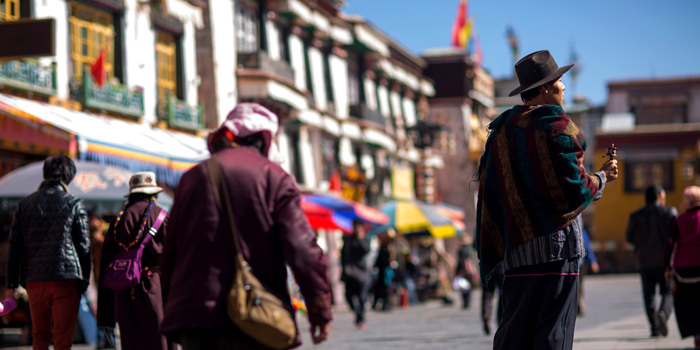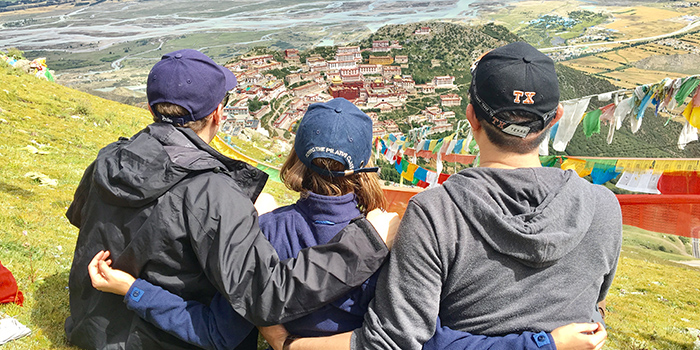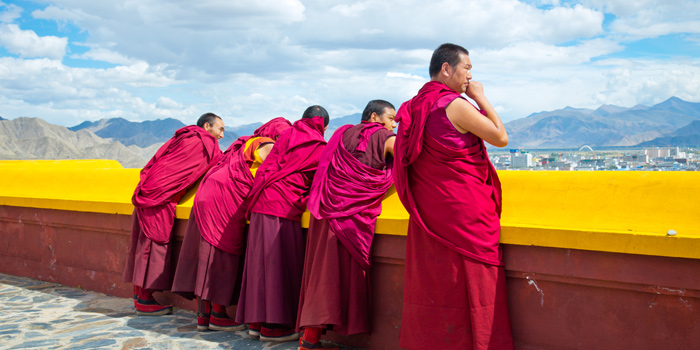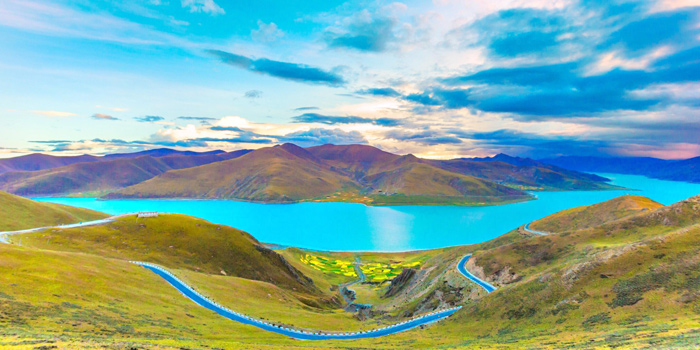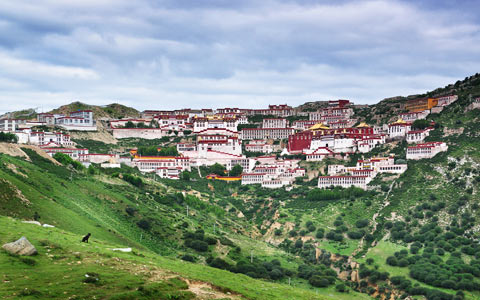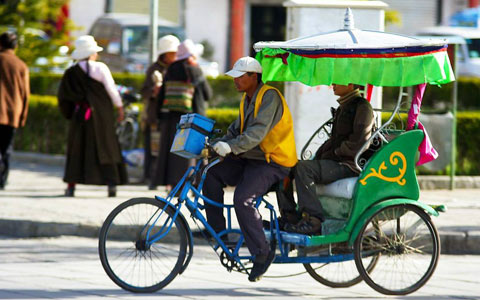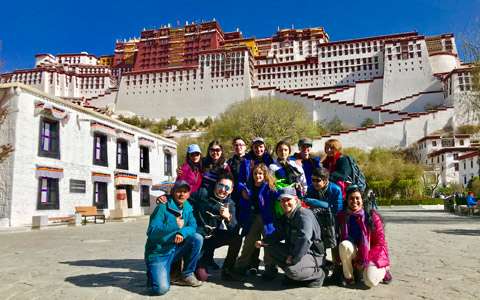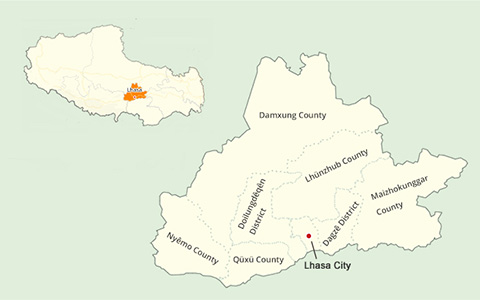Lhasa Valley: the most enchanting valley on the roof of the world
Located in the south of the high-altitude Tibetan Plateau, the Lhasa Valley is one of the most stunning valleys in Tibet. It is the most fertile place in Tibet and is also hthe location of Lhasa City, the capital of Tibet.
Here are some facts about the Lhasa Valley, providing you with a deeper appreciation of this captivating place of Tibet.
 1. How was the Lhasa Valley formed?
1. How was the Lhasa Valley formed?
 2. When was the Lhasa Valley formed?
2. When was the Lhasa Valley formed?
 3. Where is Lhasa city in the Lhasa Valley?
3. Where is Lhasa city in the Lhasa Valley?
 4. What is the altitude of the Lhasa Valley?
4. What is the altitude of the Lhasa Valley?
 5. What is the weather like in the Lhasa Valley?
5. What is the weather like in the Lhasa Valley?
 6. What are the top attractions in the Lhasa Valley
6. What are the top attractions in the Lhasa Valley
1. How was the Lhasa Valley formed?
The Lhasa River valley was formed, starting at the confluence of two rivers in the Nyenchen Mountains to the north of where the Tibetan capital now stands. As the three rivers converged in the narrow valleys in the midst of the mountains, at an altitude of around 4,200 meters, the river followed the naturally formed valley to the west, weaving its way among the high mountains, and eventually changing course to head west around the high spur at the point where the Reting Tsangpo River meets it.
The Lhasa Valley that we see today is much wider than the river that flows through it, suggesting that at some point, the river was much larger and stronger. Caused by the melting snow and ice from the mountains during the end of the ice age that occurred around 2 million years ago, carving out wide valleys and canyons through the high mountain, the Lhasa Valley was slowly formed over time to be the valley we see today.
 The Bird View of Lhasa Valley
The Bird View of Lhasa Valley
2. When was the Lhasa Valley formed?
The Lhasa Valley itself was formed more than 50 million years ago, with the lifting of the Eurasian tectonic plate due to the movement of the Indo-Australian plate northwards, which slid under the Eurasian plate, lifting it skywards more than 6 kilometers.
Small springs formed on the newly-risen plateau, which found small ripples between the mountains that had been pushed upwards, winding their courses between mountains and mountain ranges.
Over time, these small streams joined other small streams, becoming fast-flowing rivers that cut huge channels through the soil and rock of the plateau, creating the valleys we see today.
3. Where is Lhasa city in the Lhasa Valley?
At the Lhasa Valley's broadest expanse, lies the holy Lhasa City. This geographical marvel showcases the valley's generous dimensions, offering ample space for the city to flourish.
Lhasa City, the capital of Tibet, encapsulates the region's cultural and administrative hub. With its rich heritage, iconic landmarks like the Potala Palace, and a dynamic blend of tradition and modernity, it stands as a testament to the valley's significance in the heart of Tibet, welcoming visitors to explore its captivating allure.
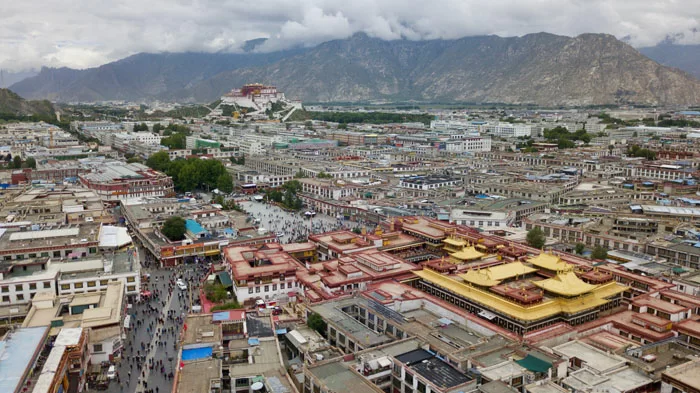 Located on the north bank of the Lhasa River is Lhasa City, with the landmark being the Potala Palace.
Located on the north bank of the Lhasa River is Lhasa City, with the landmark being the Potala Palace.
4. What is the altitude of the Lhasa Valley?
With an average altitude of 3600 meters, the Lhasa Valley has a significant altitude difference of around 1500 meters. This high-altitude region spans from 3600 meters at its lowest point to 5200 meters at its highest elevation, marking its dynamic and varied terrain.
5. What is the weather like in the Lhasa Valley?
The climate of the Lhasa Valley is variable depending on the season, something that is unique to the Tibetan plateau due to the very high elevation. In the summer months, when the monsoon season starts, the climate is more akin to that of the humid continental climates of northern Europe, with warm sunny days interspersed with moderate to heavy rainfall, mostly in the afternoons and evenings. Temperatures range from as high as 30 degrees during the day to as low as 4-5 degrees at night.
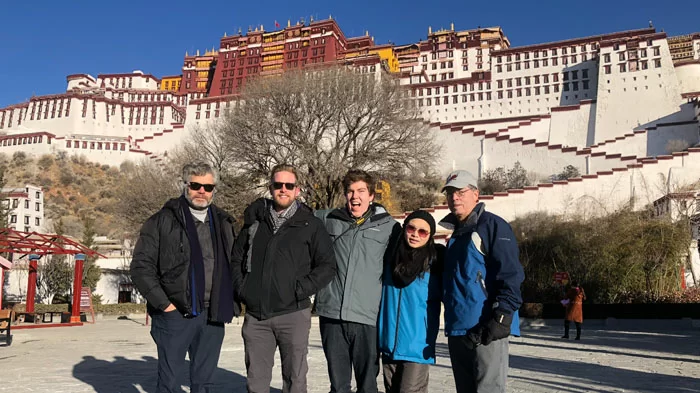 Visit the Potala Palace in winter and enjoy the sunshine.
Visit the Potala Palace in winter and enjoy the sunshine.
In the winter months, the climate is more of a sub-tropical highland climate, that leaves the land dry and arid, with frosty days filled with long hours of sunshine. Temperatures in the winter can drop to as low as minus 7 degrees at night, with daytime temperatures averaging around eight degrees. For a typical high-altitude plateau climate, this is relatively warm, due to the lower altitude of the Lhasa valley and the fact that the area is more protected by the surrounding mountains.
- Check details of Tibet Lhasa Winter Tour Packages
In Lhasa, you may enjoy your visit all year round. However, the temperature differential from day to night, while still being roughly the same as the rest of the year, can leave the nights being quite cold. Nighttime temperatures range from 3 degrees to minus eight degrees, while the days are comparatively warm, ranging from 3-9 degrees.
6. What are the top attractions in the Lhasa Valley
With it being the location of the Tibetan capital, the Lhasa Valley has a multitude of great attractions. However, the area outside the city has just as many natural attractions as the city has man-made ones.
Inside the Lhasa city are the more popular tourist attractions, such as the Potala Palace, sitting on the top of the red hill, or Moburi. Built in the 16th century as the center of government in Tibet, it lies on the remains of an ancient fort that dates back to the time of the Tibetan king, Songtsen Gampo. The Jokhang Temple, the most sacred temple in Tibet, lies in the center of the old quarter of the city, and is the end of many long pilgrim trails from across the region. Thousands of pilgrims make the journey to Lhasa every year to worship at the temple, which houses one of the oldest statues of Buddha in the world.
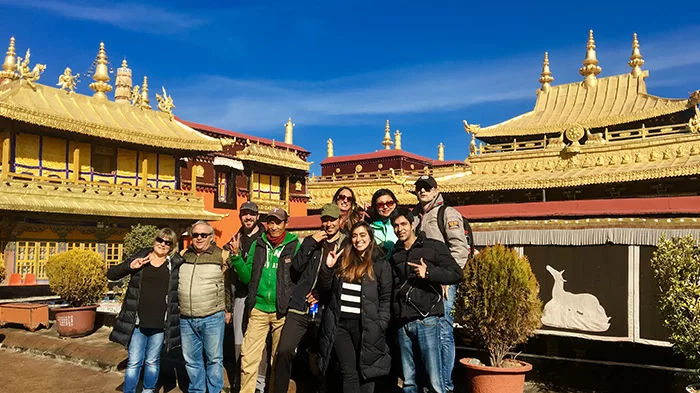 The Jokhang Temple is a must-see for all Tibet tours.
The Jokhang Temple is a must-see for all Tibet tours.
Stands as the spiritual heartland of Tibet, the Lhasa Valley is also the home to the three greatest monasteries of the Gelug sect, a significant branch of Tibetan Buddhism. These venerable institutions, known as Drepung, Sera, and Ganden Monasteries, are revered not only for their religious significance but also for their historical and architectural grandeur.
 Drepung Monastery, the largest monastery in Lhasa
Drepung Monastery, the largest monastery in Lhasa
The Lalu Wetlands in Lhasa Valley is the largest urban wetlands in the world. Lying in the western part of Lhasa city, this natural wetland environment has been preserved and kept for the migratory and indigenous species of birds and fish that live there. One of the most stunning aspects of the entire River valley, the wetlands are also a source of oxygen in this low-oxygen high-altitude region. It is the wetland areas of the valley that give Lhasa its higher oxygen content in the air during the summer months.
7. How to get to the Lhasa Valley?
To reach the Lhasa Valley, if you’re already in Lhasa city, simply head a few kilometers south to the river bank where the city is located. However, if you’re traveling from elsewhere from the mainland of China or from Nepal, you need to take more time by travel by air or by by land.
From the mainland of China, you can take a flight to Lhasa Gonggar International Airport, southwest of the Lhasa Valley, near the Yarlung Zangbo River. Flights to Lhasa operate daily, with durations ranging from 2-3 hours to 8-9 hours.
The Tibet train connect Lhasa to seven gateway cities in China, including Guangzhou, Shanghai, Beijing, Chengdu, Chongqing, Lanzhou, and Xining. Train journeys to Lhasa vary from 22 to 55 hours. The train station is south of Lhasa City, offering breathtaking views of the valley as you arrive.
 Take the Qinghai-Tibet Railway train to Lhasa
Take the Qinghai-Tibet Railway train to Lhasa
Nepal is the only country with international flights to Tibet. The direct flights from Kathmandu to Lhasa take around 90 minutes and pass over Mount Everest. Alternatively, you can embark on an overland journey from Kathmandu to Lhasa, covering more than 900 kilometers along the Friendship Highway. This route offers stunning vistas of the Yarlung Zangbo River valley and the captivating Lhasa Valley as you approach the Tibetan capital.
Conclusion
The Lhasa Valley, nestled in the heart of Tibet, is a captivating blend of stunning landscapes and cultural richness. Whether you're drawn to its natural beauty or the cultural heritage of Tibet, this valley offers a remarkable Tibet tour that's both serene and enriching for all travelers.

Energetic, responsible and reliable, Sonam is a guide with more than seven years experience informing visitors about heritage sites and attractions places in Tibet.
Related Articles & Posts
Most Popular Tibet Tour Packages
-

Lhasa - Gyantse - Shigatse - Everest Base Camp - Shigatse - Lhasa
USD939
View Details -

Lhasa - Gyantse - Shigatse - E.B.C - Saga - Kailash Trek - Darchen - Lake Manasarovar - Saga - Gyirong - Tingri - Lhasa
USD2059
View Details -

10 Days Lhasa to Everest Base Camp and Namtso Lake Small Group Tour
Lhasa - Gyantse - Shigatse - EBC - Shigatse - Lhasa - Namtso Lake - Damxung - Lhasa
USD1289
View Details -

8 Days Driving Across Himalaya Overland Adventure from Kathmandu to Lhasa
Kathmandu - Gyirong - Everest Base Camp - Tingri - Shigatse - Gyantse - Lhasa
USD1069
View Details -

4 Days Lhasa Impression Small Group Tour: Explore the Heart of Tibet and Mingle with the Locals
Lhasa
USD509
View Details -

Lhasa - Gyantse - Shigatse - Everest Base Camp - Gyirong - Kathmandu
USD979
View Details -

Lhasa - Gyantse - Shigatse- Lhasa
USD799
View Details -

13 Day Lhasa, Mt. Everest, Mt. Kailash, Lake Manasarovar and Kathmandu Adventure Tour
Lhasa - Gyantse - Shigatse - EBC - Saga - Darchen - Kailash Trek - Darchen - Saga - Gyirong - Kathmandu
USD2059
View Details


.jpg)



